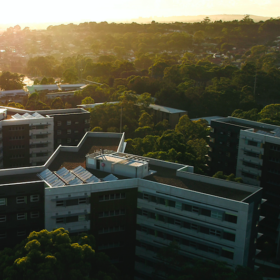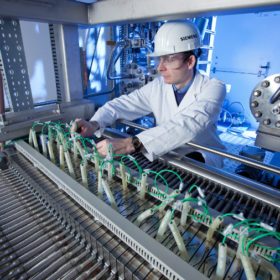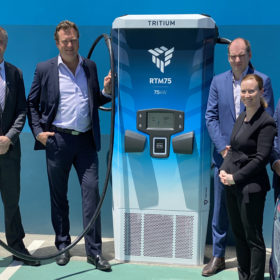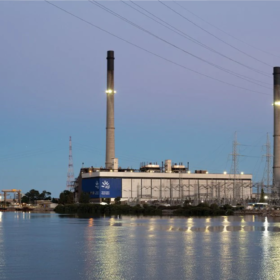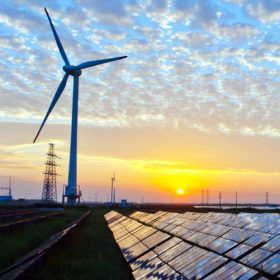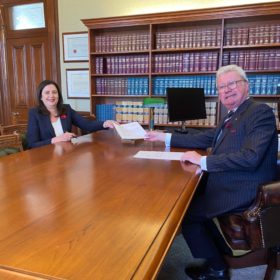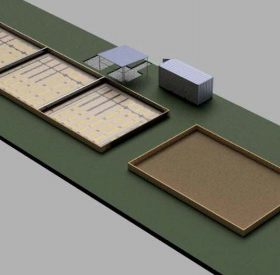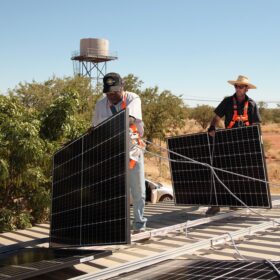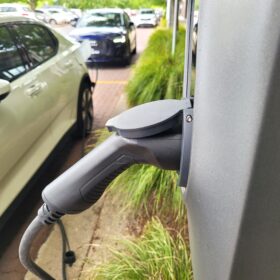Solar for trekking
Belgian start-up Sunslice has developed small, portable, high-performance solar panels that can be applied to backpacks and be used as rechargers for smartphones and watches.
What’s NUW in energy? An alliance of three NSW universities concentrates clean-energy expertise
Recognising that the major problems facing the world can’t be solved by any one organisation, three New South Wales universities at the peak of renewable-energy research have rewritten the rules of collaboration to influence policymakers and accelerate solutions to market.
UNSW to lead Australian-German green hydrogen trade feasibility consortium
The University of New South Wales will lead a consortium of Australian and German researchers and industrial partners in a feasibility study to tease out and provide solutions for the obstacles for the trade of green hydrogen from Australia to Germany.
Long-term assessment of PV panel degradation under hot, humid tropical climates
A Dutch-Hungarian research team has measured, for 12 years, the degradation rates of PV modules installed in an off-grid system located in Ghana. It found that the panels had an average annual decline in power yield of 3.19%.
Tritium launches scalable EV charging solution
Brisbane-based global EV charging powerhouse Tritium has unveiled a scalable solution which will give peace of mind to network operators and governments the world over. The solution, launched in tandem with the next-gen RTM75 DC Fast Charger, knocks down one of the few remaining obstacles to large scale EV charger uptake.
AGL grows massive battery storage in the shadow of retiring fossil-fuelled power stations
AGL, one of Australia’s biggest polluters, is working towards net-zero emissions by 2050 and new relevance in a renewable-energy-powered world. Think big batteries to replace the spinning reserve of some coal and gas generators, and digital management of its customers’ distributed rooftop resources.
Carbon nanotube gives batteries a boost
Scientists in the U.S. examined the use of different conductive filler materials in a lithium-ion battery electrode, finding that adding single walled carbon nanotubes to a nickel-cobalt-manganese cathode resulted in better electrical conductivity and higher rate capability for the overall battery. The results, according to the group, could provide new insights into design of high power, high energy battery electrodes.
October’s QLD energy price spike ‘harbinger of things to come’
On Tuesday 13th October 2020 Queensland’s electricity spiked from approximately $25/MWh to $15,000/MWh (the current market price cap) in response to a tripping incident involving the constraint of 11 solar farms and one wind farm. The event is being seen as illustrative of just what needs to be addressed in the design of NEM 2.0.
QLD establishes ministry for hydrogen as Australia moves ahead in the global race for H
In an Australian first, newly re-elected Premier of Queensland Annastacia Palaszczuk has established a ministry for hydrogen in her new government. The move comes amidst a raft of recent hydrogen related policies throughout Australia and reinforces the nation’s determination to lead the global race for a hydrogen economy.
Deakin University’s $2.3 million Hydrogen Test Bed gets underway
Deakin University’s Hydrogen Test Bed is set to position regional Victoria at the cutting edge of hydrogen research. The facility and its research is looking to determine whether Australia’s current gas infrastructure can be repurposed for the use of clean hydrogen.

